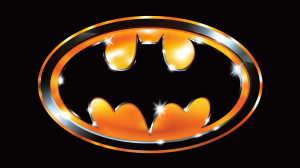
Earlier this month, Marvel Studios officially announced that Cate Blanchett had been cast the villainous goddess Hela in Thor: Ragnarok, Marvel’s third Thor standalone movie. Wondering what makes a villainess powerful enough to stand up to both the God of Thunder and the Hulk? Read on to learn about Hela’s history in the Marvel Comics Universe.
Videos by ComicBook.com
Hela was created by Stan Lee and Jack Kirby, based loosely on the Norse goddess Hel, and first appeared in Journey into Mystery #102 in 1964. She was born in Jotunheim, the home of the Frost Giants, and is the daughter of the Frost Giant Angrboða and Loki. What’s interesting is that her father is not the Loki that most in the Marvel Universe would think of when they hear the name. Her father was a previous incarnation of Loki who died during a previous Ragnarok. This is purely speculation, but this could perhaps mean that Hela will have an awareness of the cycle of Ragnarok in the upcoming movie, and possibly be instrumental in initiating it.
When Hela became an adult, Odin named her the Goddess of the Dead and granted her dominion over two realms. The greater of the two was Niffleheim, or the “Mist-Home,” one of the Nine Worlds connected by the World Tree, Yggdrasil. Niffleheim is the realm of the dishonored dead, where the great serpent Nidhogg feasts on corpses and gnaws on the World Tree’s roots. The second realm was Hel, a region within Niffleheim that is home to the dead that are neither honored nor dishonored.
Hela notably was not granted dominion over Valhalla, the land of the honored dead that is connected to Asgard, though she is often shown escorting great souls into the realm. Valhalla is the resting place of the souls of the Asgardians and their loyal human worshippers. Hela’s desire to possess the souls of the Asgardians, especially Odin’s and Thor’s, has led her into conflict with Asgard on many occasions.

The Norns, the Asgardian Gods of Fate, warned the Asgardians that Hela would be instrumental in initiating Ragnarok. Hela and Loki attempted to initiate the apocalyptic event by killing Balder the Brave and sending a wave of monsters to Asgard’s gates, but their plans were unsuccessful. Ragnarok did eventually come for the Asgardians, started by the universe itself, and Hela died with the rest of the Asgardians.
When Thor finally awoke and was reborn into the universe, he was tricked by Loki into also reviving Hela. Hela took up residence on Midgard, feeding off souls in Las Vegas. During the Siege event, it becomes clear that many Asgardians will lose their lives. Loki brings this to Hela’s attention, but Hela points out that she no longer has a realm to house the dead and instead plans to let them roam Midgard indefinitely. Through some scheming, Loki manages to bargain with Mephisto to stake out a portion of the netherworld to act as Hela’s new Hel for 1001 years. However, Loki’s treachery comes full circle, and the Disir –disgraced, cannibalistic Valkyrie – attack Hel. Hela loses an arm trying to defend her new realm, and summons a fortress around herself, but she is still forced to call on the aid of Thor – one of the recently deceased Asgardians – to fend off the Disir invasion.
The more recent Journey into Mystery series revealed an interesting time paradox in Hela’s origin story. Hela turned her lost hand into handmaiden (get it?) named Leah. The girl befriended the reborn, innocent young Loki. Though two become close and it implied that they have romantic feelings for each (though they both deny it). At one point, Loki is forced to allow Hela to reabsorb Leah into herself, but Loki then writes a new version of Leah into the universe (that’s a longer story tied to the Fear Itself event that we won’t get into here). Later, Loki and Hela conspire to send this new Leah back to the beginning of time to protect her from a shadow of Loki’s former, malevolent self. The story implies that Leah grows up over the centuries to become Hela (Leah is an anagram of Hela). This creates a kind of time paradox that echoes Hela’s original origin, as a version of Loki that is not the evil arch nemesis of Thor the Avengers “fathered” Hela.
Hela continued to rule over Hel until Angela, the recently discovered sister of Thor and Loki, stormed the realm to rescue her lover, Sera. Angela overthrew Hela and took control of Hel, then later abdicated the throne to Balder.
How will this all be adapted for the big screen? We’ll have to wait and see.
Check out when Thor: Ragnarok and other movies are coming out in ComicBook.com’s Movie Release Schedule.








